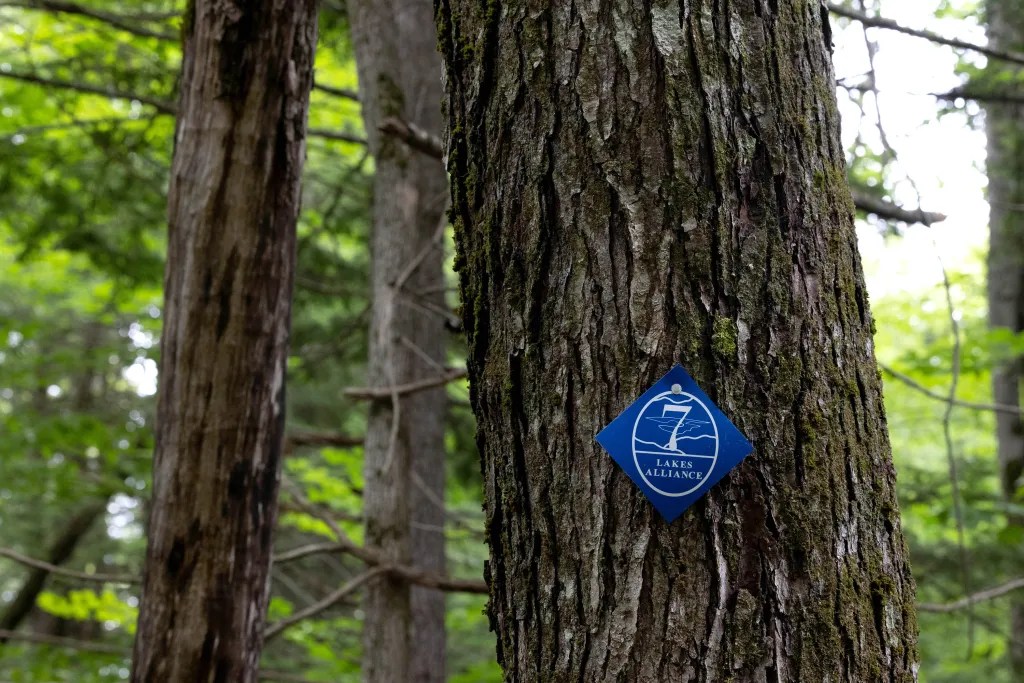
Mind blowing, amazing, surreal, transcendent, what the f-? Try to describe the two and a half minutes of solar eclipse totality and it might sound more like a drug trip or discovering religion. I mean, it changed me, you know?
High in the mountains of western Maine, the temperature dropped, winds picked up, a shadow rapidly fell on us, and peaks glowed. It was day and then it was night and twilight all at once. Oh, and the sun was a black hole. Despite anticipating its precise arrival for years, totality was overwhelming. If I lived in earlier times, I might have thought the Earth was ending.

Partiality: The Eclipse Intro
This event had been on my calendar for years, since the day I learned that—clear skies willing—an eclipse would sweep across Saddleback Mountain in Rangeley, Maine, on April 8, 2024. While I’d known my husband, Dave, and I would watch from the mountain we ski and love, we waited until that morning to decide where exactly to watch from.
We were lucky to have choices. I had been casually scouting (i.e. looking up and checking the sun’s mid-afternoon position from various trails while skiing) over the past month, and there would be numerous excellent views from summit to base. On Eclipse Day, we made the call to skip the crowded summit and ski out to Casablanca Chute 4. It’s an open glade just below Saddleback’s summit ridge, with westward views across the mountain towards Rangeley Lake. Dropping into it feels like you’re part of the mountain and trees, and it offers stunning scenery on a regular day.
It did not disappoint on this irregular day.

Again, we were lucky. We could not have asked for better conditions—clear skies, warm spring skiing temps, low winds—to hang out on the snow, in the mountains, at 3,800 feet. For the first hour of partiality, we mostly looked up at the sun and moon (eclipse glasses on) and around at the views (regular sunglasses on). Periodically I remembered to take pictures of the progression, and hoped my levels and bracketing would produce something, since it was hard to check on screen while standing in a bright snowfield.




It was relaxed, quiet, and the hour from First to Second Contact passed faster, and warmer, than expected. Unlike other spots on the mountain and down in Rangeley—which expected upwards of 20,000 eclipse viewers—there was only us and one small group below us in the entire glade. It was like having our own private skybox.





Totality: What Is Happening?!

Boom! And then totality. It was wild. If you want to take pictures (or just know what to expect) you can read, practice, and prepare. I did, a little. But how do you prepare for the unknown? You’re waiting and waiting, anticipating, and then oh my god the sky! I think I said that. More than once.
Everything darkened under the largest of shadows, except the horizon lit up like sunset, and the moon and sun became one. Just describing it sounds trippy.



I had one goal for Eclipse Day—to see the eclipse and its totality. I repeatedly reminded myself that I would be beyond lucky just to experience this rare, brief opportunity. A memorable picture would be a bonus, but I would not waste precious seconds looking at a screen or through a viewfinder.
So, eclipse glasses and solar filter off, I tried to really look—at the unexpected sunset glow, the sun’s corona, Venus appearing, the diamond ring thing people talk about. It was all happening! Brain overload. I tried to take it in, shoot a few pictures to remember what my overwhelmed mind was experiencing, and just keep looking.
It was incredible.



Partiality Reprise: Well, That Was Something
After two minutes and 28 seconds, totality was over. The sky brightened, Venus faded into the background, the shadow rushed onward toward Canada, and the mountain cheered. Like the Cheshire Cat, the sun began to slowly reveal itself again.



We hung out for a bit during second partiality, enjoying our typical mid-afternoon views, then packed up, and skied back down the mountain.




Not Another Eclipse Picture
I considered calling this entire post Not Another Eclipse Picture. Does the world really need another black box with a semicircle? Do I have anything to add to the eclipse canon? Yet, here we are. Words can fall short and memories fade. Hence photos. And I’m heartened by millions of individuals looking up to share awe for a celestial event.
Maybe because I put photographing the eclipse secondary to watching it, I was pleased with the pictures I did get. I captured sunspots and solar prominences, saw the incredible diamond ring and two planets (Venus and Jupiter), and witnessed a well-loved landscape and sky transformed.
The day after the eclipse, Dave and I were discussing Led Zeppelin’s “Kashmir” and described it as having a “totality vibe”: it’s super intense, amazing, and overwhelming; you’re not entirely sure of everything that is happening all around you, but you know it’s incredibly cool and singular.
Kind of like our sun and moon for two and a half minutes on April 8, 2024.


I’d like to thank Saddleback Mountain for being the best ski mountain around and placing itself so conveniently in the path of eclipse totality, the moon for stellar choreography, the sun for life on Earth, and Dave for skiing double-black diamond glades with a backpack of camera equipment.
Also, xkcd’s Eclipse Coolness comic was correct.
All photos copyright Alicia MacLeay.
Click on an image and you can scroll through the galleries above.














































































































































































